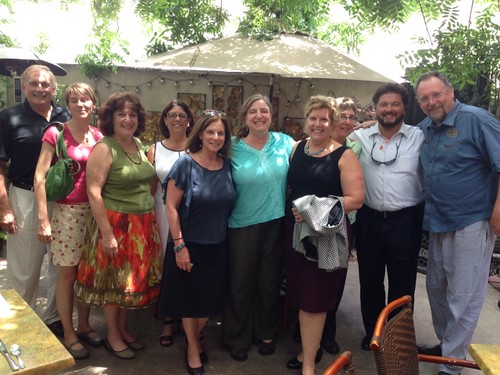
Since 2009, USDA has invested in 29,100 local food opportunities, including food hubs, small scale processing and farmers markets across all 50 states and the US territories. These investments include over 12,000 loans and micro-loans to small-scale producers who often sell products locally and over 13,000 high tunnels (low-cost covered structures that extend the growing season and make locally-grown products available later in the year).
However, as with any investment, the success of a business depends not just on an infusion of capital, but also on good planning. Technical assistance services such as feasibility studies, business planning, financing strategies, supply chain logistics, marketing, and guidance with the policy and regulatory environment are equally important.
This is why USDA Rural Development is introducing a new technical report series called Running a Food Hub. Developed in partnership with Virginia Foundation for Agriculture, Innovation and Rural Sustainability (VA FAIRS) and Matson Consulting, Running a Food Hub offers new and existing food hubs valuable information on how to plan for success, address challenges, and achieve viability. The first report in the series, Running a Food Hub: Lessons Learned from the field, details best business practices for starting or expanding a food hub, including operational profiles of several existing hubs.
One such food hub is Capay Valley Farm Shop, a direct-to-consumer and wholesale food hub in the Capay Valley of Central California. Established in 2007, the food hub works with 45 local producers to provide wholesale products for independent specialty retailers, restaurants, and corporate cafeterias. A CSA (Community Supported Agriculture) type “FarmShares” program is available for individuals and families to receive a regular mix of local fruits and vegetables. The food hub’s website offers a wide selection of pasture-raised meats, eggs, and value-added products such as olive oils, jams, honey, nuts, and herbs. Capay Valley Farm Shop has experienced significant growth over the years, with sales for 2014 close to $1 million.
Using insights from Capay Valley Farm Shop and several other food hubs, Lessons Learned from the Field covers best practices for every aspect of running a food hub enterprise, including choosing customers and products to planning operations such as labor, software, food safety, and infrastructure. Attention to these factors will help a food hub incorporate a long-term view and provide easier transitions through growth in the future.
USDA Rural Development is leading the way to support the development of food hubs and other such enterprises to drive economic opportunity in rural counties across America. I recently saw this first-hand during a trip to Sacramento, California, where I met with the Sacramento County of Governments (SACOG). As an association of local governments in the six-county region surrounding Sacramento, SACOG gave me an overview of their innovative Rural-Urban Connections Strategy (RUCS), which looks at the region's growth and sustainability objectives from a rural perspective. The strategy includes a call for expanded “regional agricultural infrastructure” to increase the amount of locally grown food reaching local markets. Through a comprehensive feasibility study, SACGO determined that the region is well-positioned to take advantage of the aggregation, distribution, and marketing services a food hub can offer.
Secretary Vilsack has identified local and regional food systems as one of his Four Pillars of agriculture and rural economic development, along with production agriculture, the bio-based economy, and natural resources and conservation. The Department’s commitment to local and regional food systems is coordinated through the Know Your Farmer, Know Your Food Initiative, which includes the Know Your Farmer, Know Your Food Compass, a searchable map of USDA’s investments in local and regional food systems.
